Disclosure: This article contains affiliate links. We may earn a commission from purchases at no extra cost to you, which helps our travel content.
G'day, fellow wanderers! Raj here, fresh from what might be the most unique capital city I've ever explored. When I told my dermatology colleagues I was spending my winter break in Tuvalu, most had to Google where it was. That's the beauty of Funafuti - a capital city so small and unassuming that you could walk its entire length in a single morning. As someone who's grown up straddling Australian and Indian cultures, I've always been fascinated by places where traditional life and modernity coexist in close quarters. Funafuti delivers this experience in spades, all while being surprisingly budget-friendly for a remote Pacific paradise.
First Impressions: Navigating Funafuti's Unique Layout
Funafuti isn't your typical capital city. Imagine a boomerang-shaped atoll where the widest point is barely 400 meters across. The main road - and yes, there's really just one proper road - runs the length of the main islet of Fongafale, connecting most of the country's government buildings, shops, and residences.
Upon landing at the tiny international airport (a generous term for what's essentially a small building beside a runway), I was struck by how the airstrip doubles as a community space when no planes are scheduled. Children played games, adults chatted in groups, and I even spotted a makeshift volleyball court.
Navigating Funafuti is refreshingly simple. With essentially one main road, it's nearly impossible to get lost. I opted to explore on foot, but many visitors rent bicycles or motorbikes. If you're staying more than a day, consider a foldable water bottle to stay hydrated in the tropical heat without generating plastic waste - particularly important in a nation facing existential threats from climate change.
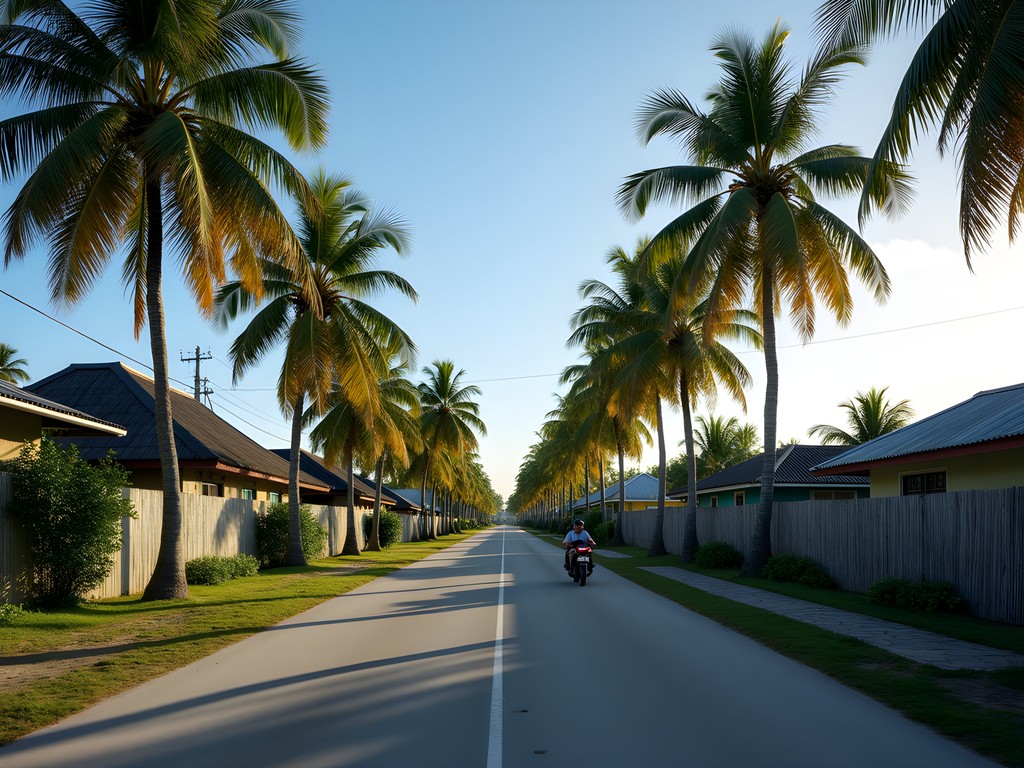
💡 Pro Tips
- Wear reef-friendly sunscreen as you'll likely be near water constantly
- Bring a hat and light clothing - there's little shade on the main road
- Download maps offline before arrival as internet can be spotty
Cultural Highlights: Government Buildings to Traditional Meeting Houses
Despite its size, Funafuti packs in a surprising number of significant sites. The Government Building, while modest by global standards, stands as the administrative heart of this island nation. Nearby, the Tuvalu Philatelic Bureau is worth a visit - Tuvalu's colorful postage stamps are famous among collectors worldwide, and sending postcards from here means they'll carry truly unique postmarks.
As someone with a deep appreciation for cultural heritage sites, I was particularly drawn to the maneapa (community meeting houses). These open-sided structures with distinctive peaked roofs serve as gathering spaces for important community discussions and celebrations. During my visit, I was fortunate to witness elders meeting in the Vaiaku maneapa, their animated discussions carrying on the governance traditions that predate colonial influence.
The Tuvalu National Library and Archive, though small, houses fascinating historical documents and photographs. The staff were incredibly welcoming when I expressed interest in learning about traditional medicine practices - a professional curiosity from my dermatology background. They shared resources about how islanders have historically treated skin conditions using local plants and seawater therapies.
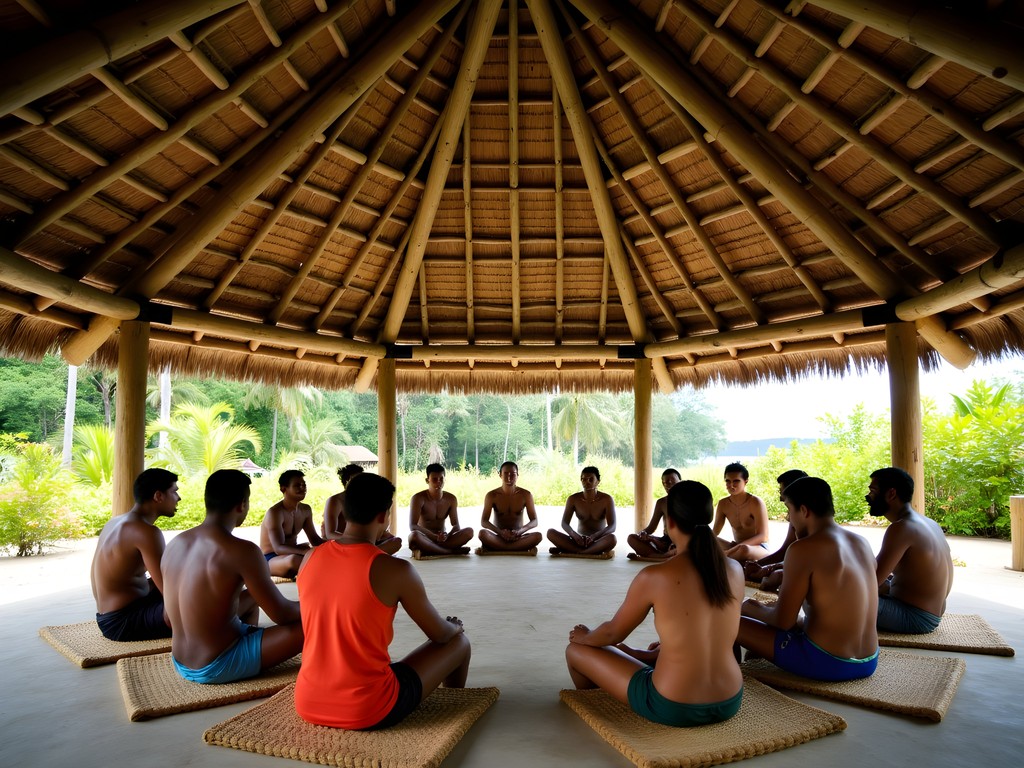
💡 Pro Tips
- Ask permission before photographing people, especially in maneapa
- Visit government buildings during weekday mornings when they're most active
- Bring a small gift if invited to a local home - imported chocolates are appreciated
Coastal Highlights: Where Land Meets Lagoon
What makes Funafuti truly special is how the narrow land mass creates two distinct coastal experiences within minutes of each other. The eastern side faces the vast Pacific Ocean, with rougher waters and coral rubble shores. The western side opens to the magnificent Funafuti Lagoon, one of the world's largest - a protected expanse of turquoise water that feels like nature's swimming pool.
I spent one morning exploring the Conservation Area, a protected marine zone accessible by boat from the main islet. If you're planning to snorkel here (highly recommended), invest in a dry bag to keep your valuables safe. Mine proved invaluable when our small boat encountered choppy waters on the return journey.
The Funafuti Marine Conservation Area encompasses six uninhabited islets and their surrounding waters. While organized tours exist, I arranged a more budget-friendly option by chatting with local fishermen at the wharf who were happy to transport me for a fraction of the tour price.
Back on the main islet, don't miss sunset at the western shore. I set up my portable hammock between two palms and watched the sky transform into a canvas of orange and pink hues reflected in the calm lagoon waters. It was one of those perfect travel moments that cost absolutely nothing yet felt priceless.
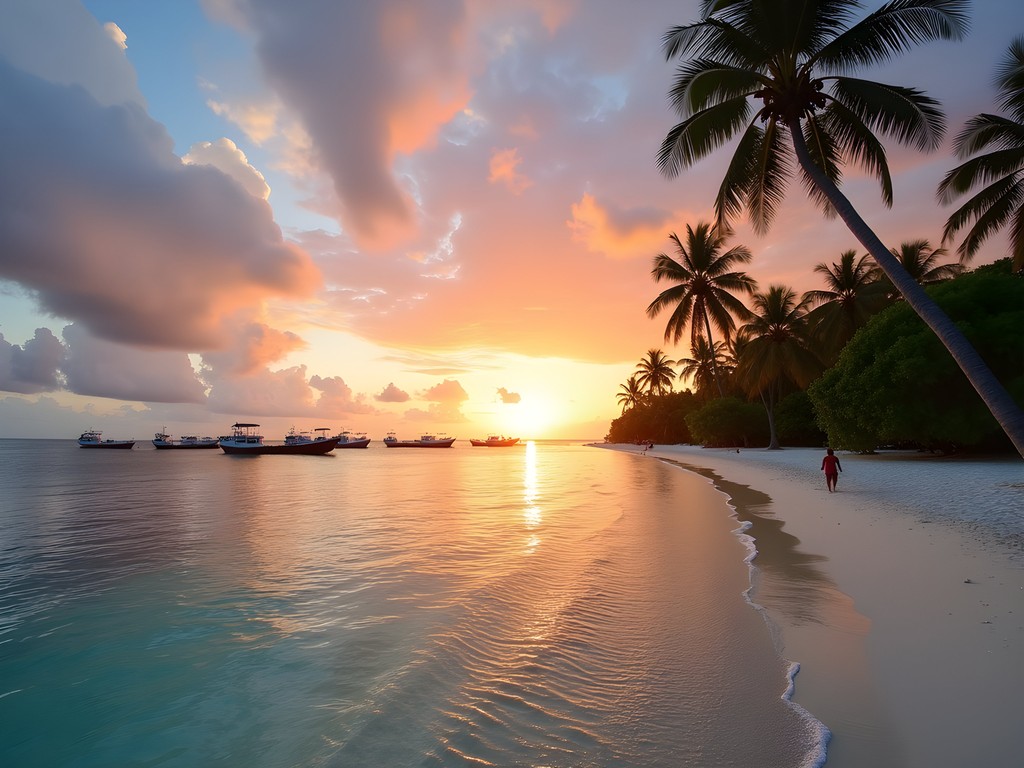
💡 Pro Tips
- Visit the Conservation Area early morning for best visibility and wildlife viewing
- Pack reef shoes for walking on the eastern shore's coral fragments
- Bring your own snorkeling gear as rental options are limited
Local Life: Markets, Meals, and Community Connections
To truly understand Funafuti, you need to experience its community rhythms. The Funafuti market operates primarily on Wednesdays and Saturdays when supply ships arrive, bringing fresh produce and goods. It's small but vibrant, with locals selling fresh fish, tropical fruits, and handcrafted items. I picked up some beautiful woven pandanus mats that now adorn my apartment in Arlington.
Food options in Funafuti are limited but authentic. Small family-run eateries serve fresh seafood and traditional dishes like pulaka (a starchy root crop) and palusami (coconut cream wrapped in taro leaves). As someone with Indian heritage, I appreciated the subtle similarities between some Tuvaluan cooking techniques and those my grandmother used.
One evening, I was invited to a community kava ceremony. Kava, a mildly sedative drink made from plant roots, is central to social gatherings across the Pacific. The insect repellent lotion I brought proved essential during this outdoor evening event - mosquitoes in Funafuti are particularly active at dusk.
Church plays a central role in Tuvaluan life, with Sunday services drawing the majority of the population. Even as a non-religious visitor, attending a service at the Fetu Ao Lima Church offered fascinating insights into community bonds and beautiful Polynesian hymn singing. Remember to dress modestly - I wore long pants and a collared shirt out of respect.

💡 Pro Tips
- Plan your shopping around ship arrival days for best market selection
- Try the local tuna - it's incredibly fresh and often served raw with coconut cream
- Bring small Australian dollars as they're widely accepted alongside Tuvaluan currency
Climate Change Awareness: Understanding Tuvalu's Existential Challenge
It's impossible to write about Tuvalu without addressing climate change. This nation sits just meters above sea level, making it one of the most vulnerable places on Earth to rising oceans. Throughout Funafuti, you'll notice seawalls, water collection systems, and other adaptation measures.
During my medical training, I studied how environmental changes affect health outcomes, but seeing Tuvalu's reality firsthand was profoundly moving. At high tides, especially during full moons, parts of the island can experience flooding - a stark reminder of what's at stake.
The Tuvalu Climate Change Office welcomes respectful visitors interested in learning about their challenges and solutions. I spent an informative afternoon speaking with staff about their innovative approaches to water conservation and coastal protection.
If you're planning an extended stay or multiple island visits in the Pacific, consider a solar power bank - electricity can be intermittent, and sustainable power usage aligns with supporting Tuvalu's environmental concerns.
As travelers, we have a responsibility to visit vulnerable destinations like Tuvalu with awareness and care. Minimize your water usage, avoid single-use plastics, and consider offsetting your travel emissions. Most importantly, amplify the stories and voices of Tuvaluans fighting to preserve their homeland.
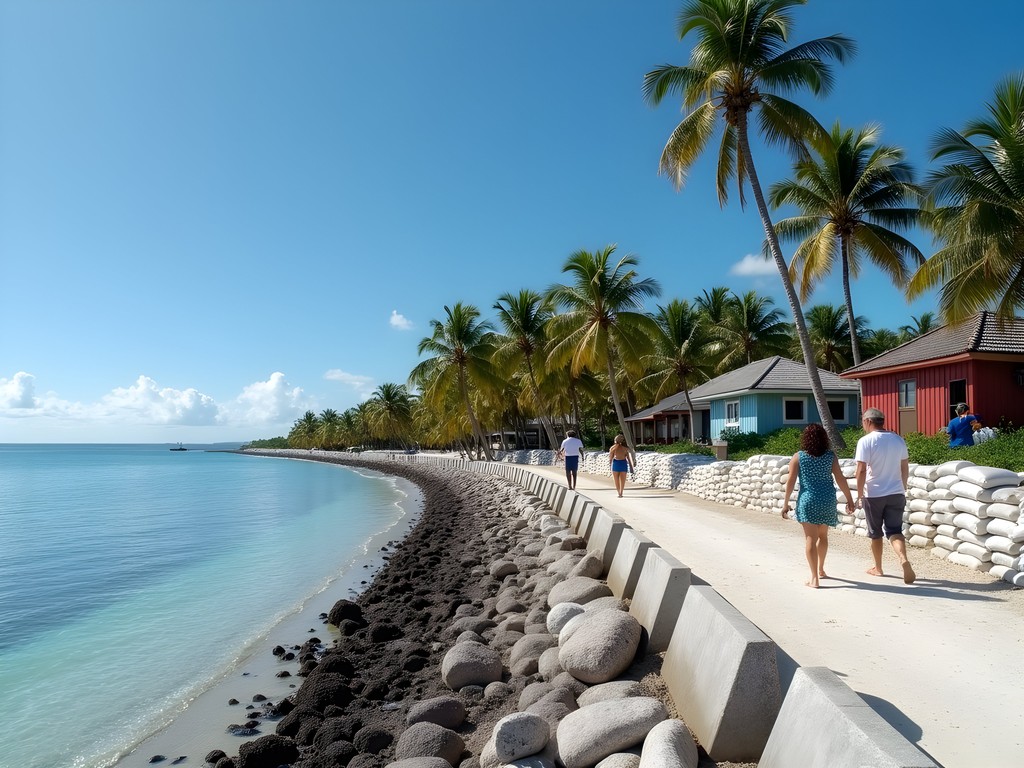
💡 Pro Tips
- Visit during lower tides if possible to avoid witnessing stressful flooding events
- Bring reef-safe sunscreen to protect the fragile marine ecosystem
- Consider donating to local climate adaptation projects if you're financially able
Final Thoughts
As my weekend in Funafuti came to an end, I found myself reflecting on how this tiny capital challenged my perception of what makes a city significant. It's not about skyscrapers or tourist attractions, but about community resilience and cultural identity. Walking from one end of the capital to the other might take just a few hours, but understanding its depth requires much longer.
Funafuti offers a rare glimpse into a way of life that balances traditional Pacific values with modern challenges. For budget travelers seeking meaningful connections rather than luxury amenities, it delivers rich experiences at minimal cost. The simplicity of life here - where everyone knows everyone, where land and sea exist in delicate balance, where tomorrow's existence isn't guaranteed due to climate change - provides profound perspective that expensive tourist destinations rarely offer.
If you make the journey to this remote capital, come with respect, curiosity, and willingness to adapt to island rhythms. Funafuti won't overwhelm you with activities or attractions, but it will offer something increasingly rare in our hyper-connected world: genuine human connection and the space to contemplate our relationship with our planet. After all, what this fourth-smallest capital lacks in size, it more than makes up for in significance.
✨ Key Takeaways
- Funafuti can be thoroughly explored on foot in a single day, making it perfect for a weekend trip
- The contrast between lagoon and ocean sides offers two distinct coastal experiences within minutes of each other
- Engaging with local community events provides the most meaningful experiences in this tiny capital
- Witnessing climate change impacts firsthand creates powerful environmental awareness
- Budget travelers can experience authentic Pacific island culture without expensive resorts or activities
📋 Practical Information
Best Time to Visit
May to November (dry season)
Budget Estimate
$50-100 USD per day (excluding flights)
Recommended Duration
2-3 days
Difficulty Level
Easy

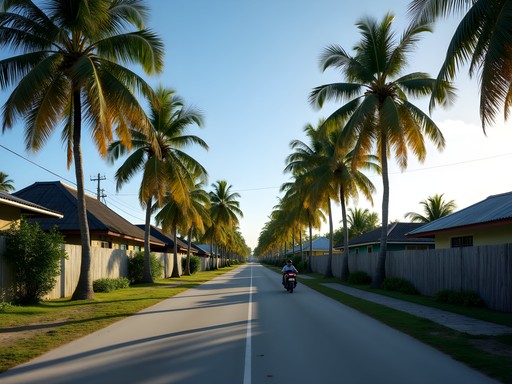
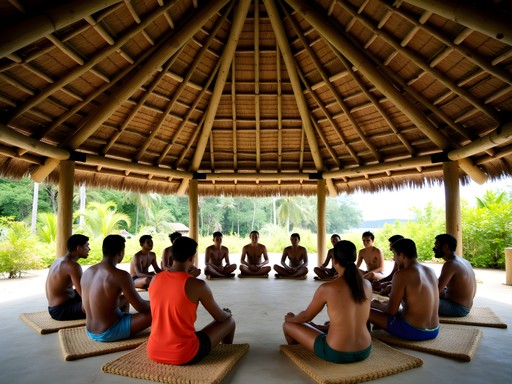
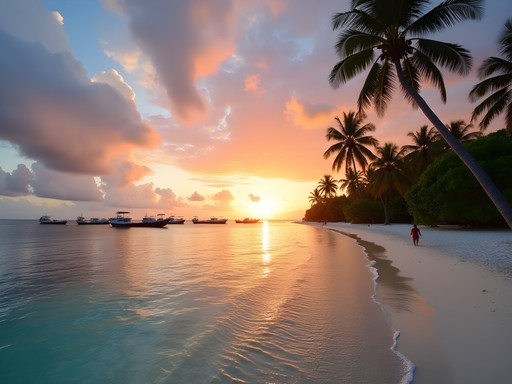
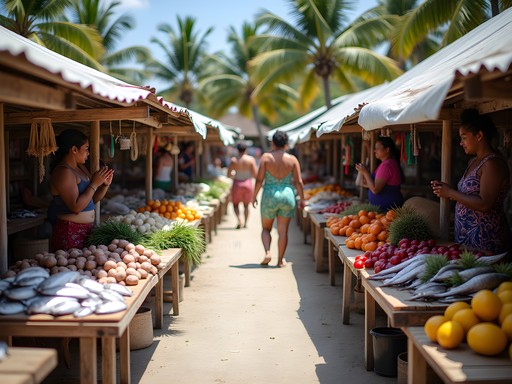
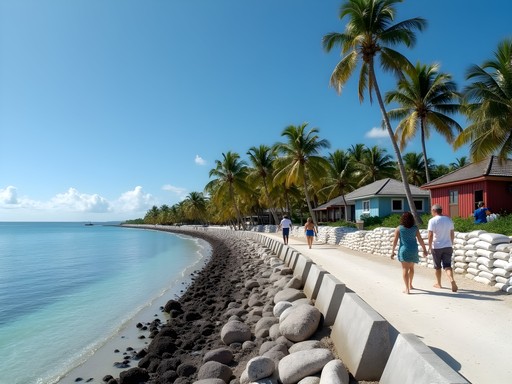


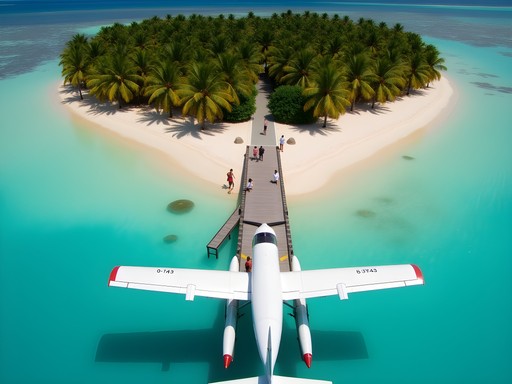







Comments
wavediver
What's the weather like? Best time to visit?
islandqueen
Not Raj, but I've been researching this too! May-October is supposedly the dry season with less humidity. December-March can have heavy rains.
Raj Ford
That's right! I went in August and it was perfect - sunny but not too humid. The trade winds keep things comfortable. Just be prepared for occasional quick showers no matter when you visit.
wanderlustmaster
Just incredible! Tuvalu has been on my radar for years but I've never seen such a detailed walking guide for Funafuti before. Love how you captured both the environmental challenges and the cultural beauty. Those sunset shots over the lagoon are pure magic!
Sophia Gomez
Raj, your post brought back such vivid memories! I visited Funafuti last year for a climate conference, and walking that narrow strip of land was surreal. What struck me most was how the rising sea levels are a visible, daily reality there. During high tide, parts of the island were literally underwater. The resilience of the locals is incredible though - I was invited to a community gathering where they performed traditional dances and shared stories about adapting to climate challenges. Did you get to experience any community events during your visit? The conservation efforts around the lagoon were also fascinating to learn about.
exploreking2171
I'm planning a Pacific island hop next year and considering Tuvalu. How many days would you recommend staying in Funafuti? And how difficult was it to arrange flights there?
Raj Ford
I'd recommend 2-3 days for Funafuti itself. It's small but there's a surprising amount to experience! The flights can be tricky - only Fiji Airways flies there twice weekly from Suva. I used my travel planner to grab a seat when they became available. Book accommodation well in advance too - limited options!
starphotographer
Those lagoon photos are absolutely stunning! What camera setup did you use?
islandqueen
How did you handle transportation around the island? Is it walkable or did you rent something?
Raj Ford
Great question! Funafuti is incredibly walkable - the main part is basically one long road. I did the whole walking tour in about 3 hours with plenty of stops. Some locals get around on scooters and there are a few shared taxis, but honestly, walking is the best way to experience it!
islandqueen
Thanks Raj! That's perfect - I prefer exploring on foot anyway. Can't wait to visit!
wanderrider
Wow Raj, you always find these incredible hidden gems! Funafuti looks absolutely stunning. That narrow strip of land between ocean and lagoon is just mind-blowing. Definitely adding this to my bucket list!
greenninja
Never seen a blog post about Tuvalu before! Those lagoon colors are INSANE! Adding to my bucket list immediately.
Nicole Russell
This brings back memories! I visited Funafuti last year and was blown away by how friendly everyone was. The capital may be tiny but the hearts of the people are huge! My favorite memory was joining a community volleyball game on the airstrip in the evening - apparently it's the local hangout spot when no planes are coming! Did you try the pulaka? It's their traditional root vegetable dish. The conservation area was closed when I visited due to some kind of local ceremony, so I'm jealous you got to see it! Great post capturing the essence of this special place.
escapepro
This is exactly the kind of off-the-beaten-path place I've been looking for! How difficult was it to actually get there? The flights seem really limited from what I can find online.
Raj Ford
It's definitely not easy! Fiji Airways runs flights from Suva, but only twice a week. I built my entire South Pacific itinerary around those flight days. Worth the hassle though - you'll have stories for years!
escapepro
Thanks for the tip! Guess I'll be planning my trip around those flight days too. Can't wait to see that lagoon in person!
Venture X
Premium card with 2X miles, $300 travel credit, Priority Pass